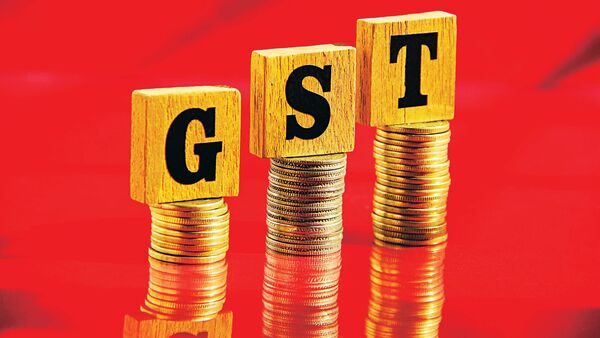It is commonly known that our oil import dependence is huge, which makes India vulnerable to crude price changes. In March 2022, the Indian basket’s price hit $112.87 per barrel, and has come down since, reaching $79 at the end of April 2023. Currently, crude oil and petroleum products (including diesel, petrol, aviation turbine fuel and natural gas) are out of the GST purview; the Centre and states respectively levy excise duty and VAT on it. Oil is a major source of revenue for the government, with excise and custom duty on it forming 29% of the Centre’s total indirect tax mop-up. Meanwhile, states earn an average 13% of their own tax revenues from sales tax/VAT on these hydrocarbon products.
States in India have their own tax structure with each levying a combination of ad valorem tax, cess, extra VAT/surcharge based on their needs. These taxes are imposed after considering the crude oil price, transportation charges, dealer commissions and the flat excise duty imposed by the Centre. Multiple taxes have made petroleum and oil product prices in India among the world’s highest. Since the crude price is considered by states, it often means international spikes get passed on, which contributes to higher inflation.
We could adopt a simple structure for oil pricing under which our domestic petrol price is linked to crude oil (Indian basket) in a way that it retails at a rupee figure ₹5-6 per litre higher than the crude price (in dollars per barrel), while diesel could be kept at par with crude oil. For instance, if crude oil is for $80 per barrel, then our uniform petrol price be ₹85-86 per litre. Further, we could place a cap of ₹100 per litre on petrol prices. Meanwhile, diesel prices could be pegged ₹5-6 lower than petrol prices. This can be worked out by the government by adjusting the cess amount on diesel and petrol.
Accordingly, we propose simple model for bringing oil under GST. We consider the GST rate of 28% for the highest bracket (Centre: 14%, state: 14%). Additionally, we impose a flat cess of ₹24 for petrol and ₹16 for diesel, with an equal division between the Centre and states. Other assumptions are Indian-basket crude at an average of $85 per barrel, the US dollar at ₹84 and current transport and dealer commissions. We used 2023-24 consumption estimates by the oil ministry’s Petroleum Planning and Analysis Cell and applied proportional shares for various states.
Our calculations show that if crude were to average $85, then moving oil to GST would cause a total revenue loss of ₹1.3 trillion ( ₹71,000 crore for the Centre and ₹61,000 crore for states). But if oil drops to $70, the loss would rise proportionally. Given our base case with crude at $85, the estimated petrol price is ₹91 a litre and diesel ₹86 per litre. This indicates that the price of petrol can fall by ₹15 per litre and diesel by ₹8 per litre, for instance, in Mumbai.
If we look at India’s 10 major states, the gap between calculated GST revenue and VAT revenue from oil in 2023-24 (based on the share of total sales tax/VAT collected from these products in 2021-22) shows that the loss in revenue would vary between ₹300 crore and ₹11,000 crore for these states, with some like Haryana and Karnataka even benefitting from shifting oil to a GST regime.
However, revenue losses could also be grossly exaggerated. For example, in 2022-23, estimates of GST collection for the Centre were revised upwards by ₹74,000 crore from the Budget Estimate; accordingly, the states also revised their CGST estimates upwards by around ₹27,000 crore. Meanwhile, the monthly average GST mop-up has risen from ₹1.2 trillion in 2021-22 to ₹1.5 trillion in 2022-23. Thus the estimated loss in revenue of ₹1.3 trillion in the base case scenario could be significantly outstripped by revenue buoyancy under GST. In 2023-24, if the monthly GST collection increases further than around ₹1.75-1.8 trillion owing to better compliance, it is likely to compensate states for revenue losses caused by shifting to GST.
Our analysis clearly shows that potential losses from bringing oil under GST have been grossly overstated. Also, some of the loss in revenue would be offset by an increase in consumption due to lower prices. The only thing that states would miss is their power to fix VAT rates on fuel in isolation. Once we shift oil to GST, we will also face the issue of adjustment of input tax credits of ₹20,000 crore that the Centre may have to forgo.
However, it should be emphasized that GST on oil is a pending reform and it should now be implemented, as it offers the advantage of bringing uniformity in the country’s tax structure. All considered, the benefits of bringing fuel under GST far outstrip those of keeping it outside its ambit. For the record, even if we assume a hypothetical ₹1.3 trillion exaggerated loss, it is barely 0.4% of GDP that the government would have to eschew.
Lastly, some food for thought. Perhaps the government should also contemplate the option of linking fuel refills to Aadhaar cards or car registration numbers, so that fuel subsidies if any can be targeted at beneficiaries on the basis of usage or income levels.
Soumya Kanti Ghosh & Disha Kheterpal are, respectively, group chief economic adviser and economist, State Bank of India.These are the authors’ personal views.
Download The Mint News App to get Daily Market Updates.
More
Less
#Fuel #GST #Fears #revenue #hit #exaggerated
